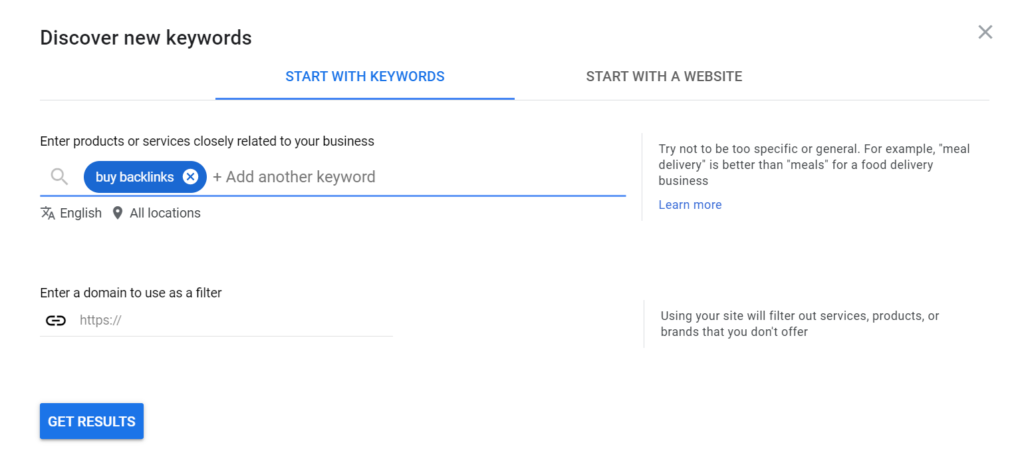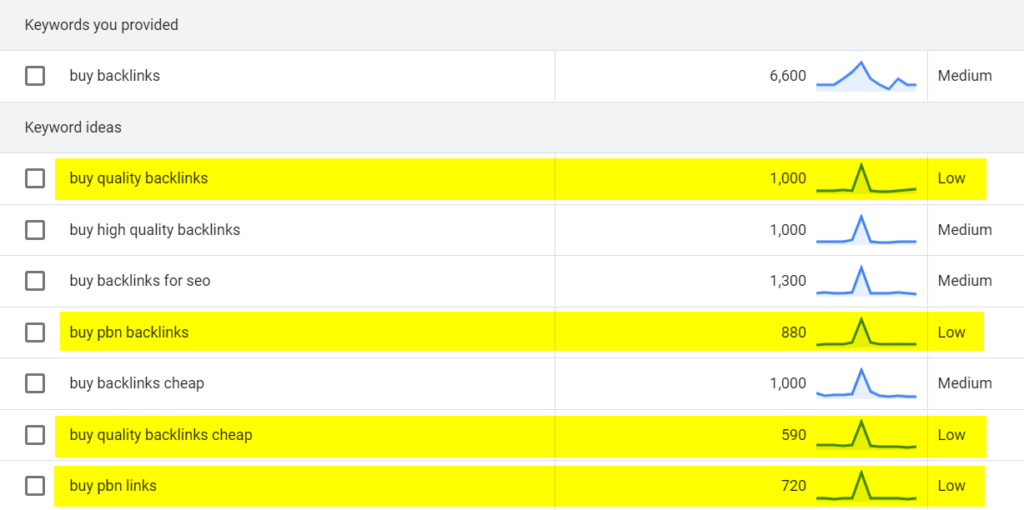Why should you know about long-tail keywords and how they help to improve your website’s ranking? How to find those of them that will almost instantly improve your webpage’s specs? We will thoroughly guide you through this topic using simple words. So if you’re new in SEO it will still be a great help to you.
What are Long-tail keywords going to do with your sales
As you could have guessed from the name, long-tail keywords are longer than average keywords we would normally use. Their length allows you illuminating the topic in more details than normal keyword phrases.

We will tell you a little secret now.
Visitors intend to use them when they’re ready to purchase something. This is the crucial point to be taken into account. They also use them while making voice command for a search.
Those long-tail keywords are not always straightforward, and the process of finding them is rather intuitive and creative. No doubts, when you get used to working with them properly, the results will not wait to come. In this article we will teach you how to find long-tail keywords with a low level of competition.

Keywords strategy for startups and small companies
Here’s the simple example. Let’s suppose you are selling SEO services. Now let’s make it more concrete and take one certain SEO product like classic backlinks. There is extremely low probability for your page to appear anywhere near the top of Google search results. Here we assume that you are not using paid adverts and only hoping to get organic traffic from search results for “backlinks”. You probably know the reason for your failure: yes, it’s high competition for the keyword “backlinks”.
This particularly applies to smaller businesses and startups. They are not yet known by Google to be found with such “head term” keyword like “backlinks” and as a result have to apply another keyword concept. In comparison, the established companies that have been in the market for a long time have dug their way through to the top of Google and can afford exploiting keyword “backlinks”.

Long-tail keywords is a shortcut to outranking your competitors
However, there’s always a way to stand out from the crowd. Identify your audience, narrow down the search limits, and you will find the right visitors for YOUR page. Ask yourself: what are long-tail keywords for my clients? What are they really looking for? Now, be smart and instead of using plain “backlinks” try writing “quality and cheap backlinks”. Or maybe you would want to specify a certain country by mentioning “quality German backlinks” or “cheap Chinese backlinks”, etc. Use your imagination. You will soon find out that this trick will attract those visitors that will be looking exactly for your product. The rest will depend on how you present it, and we will cover this topic in our next articles.

Long-tail keywords are how people really search the Internet
Let’s imagine you have some spare cash to get yourself a nice car. If you google the word “car”, how likely for you to buy something from the first few clicks? Zero. It is because the word you used for a search is too broad and doesn’t take into account your price expectations, the country you live in, and many other important issues. But if you google “quality second-hand cars in New-York” you will get the result that would be of great interest to you right now. You have the exact idea of what you are looking for and if the result matches your expectation there will be a high chance for sale to happen.
Of course, you need to understand that you will drive less traffic with a long-tail keyword than you would with a more common one. However, this cut-off traffic is more desirable for you as it is from your target audience and has a lot of commitment to your services and products.
Long tail keywords add relevance to your content.
Google has always promoted contextual search, and after issuing its Hummingbird update in 2017, it became even more evident. To make your content more relevant to Google and, as a result, to your visitors you need to work on its contextuality. Long tail keywords will help you here to set the priorities and identify new interesting trends. For example, apart from selling backlinks you might as well want to offer the services of letting them for rent on a monthly or yearly basis. That could easily become a trend especially in the era of constant financial uncertainties.

Long-tail keywords have excellent conversion rates
Having said that Long tail keywords improve context of your content, it would be also important to stress out here that it will make a great contribution to your conversion rates. Obviously, you shouldn’t expect it to raise from 2-5% (if you are beginner) to 30% overnight just because you added some Long-tail keywords to your website. It takes some time, practice, and of course consistency.
Long-tail keywords combust your blog engine
If you didn’t know, your blog is the key to your organic traffic and the best way to rank in SERPs. Make sure you constantly (at least once a week) add a new article of at least 1000 words long. To benefit from long-tail keywords, use it not just in body text but also in the URLs. It all counts for Google.

Long-tail keywords is a weapon against stagnation
If you are not the first day on the market and are actively using keywords, but at the same time you do not see any positive changes on your site, then you are doing something wrong. One of the main marketing and SEO tasks for any company, regardless of its size and success, is generation of traffic that can turn into desired customers. As the HubSpot survey shows, 65% of companies are unhappy with their SEO-results and trying to optimize their keywords further. The reason for their failure lies in the same inability to find the right pool of keywords capable of creating a real conversion funnel for their website.

Use Long-tail keywords together with a clear structure
Implement well-organized long tail keyword data to set the right direction for your SEO strategy and stay ahead of the competition in search results.
For more than a year now, one of the important priorities that has a direct effect on ranking in search results has been the presence of a clear and clear structure in the presentation of information.
What’s more, Google even has a separate structured data tool for this to validate your text schema on your site. We hasten to share our experience with you: Schema.org has a database with a similar structured code that adds the correct structure of your data for search engines.
<div itemscope itemtype = ”https://schema.org/Book”>
<span itemprop = ”name”> Inbound Marketing and SEO: Ideas from the Moz Blog </span>
<span itemprop = ”author”> Rand Fishkin </span>
</div>
It makes search results more interactive and understandable.
What Are Long-tail Keywords and How to Find Them?
And now we are smoothly approaching the most important thing. How do you find those magical long-tail keywords while staying within your niche and avoiding serious competition? You can easily do it yourself without the help of SEO specialists, and now we will tell you exactly how.
There are 2 totally free tools that you can use when searching for relevant long tail keywords.
A great source for finding long tail keywords that will open your eyes and help you find keywords you never thought of before. At the same time, you can clearly see which of them are the most relevant and which are the easiest to implement. To take the first step, you will just need a Google account to sign in and a credit card. But don’t worry, as we already mentioned, this tool is free. You won’t be charged any money unless you begin an advertising campaign.
An excellent and incredibly informative resource where you can get a fairly accurate number of visitors for certain keywords, as well as the complexity of search engine optimization (SD) for each of them being ranked from 0 to 100 depending on the difficulty level. The free version allows you to make 3 requests per day, which is not bad for the beginning. However, here’s one more secret from us: you can easily bypass these restrictions using utilities to change your IP (VPN services) or by loading pages in your browser’s incognito mode.
Step 1: Click here:

Step 2: Enter you short-tail keyword, choose language and location and click “GET RESULTS”

Step 3: Grab a keyword idea with lower competition than your “initial short-tail keyword” and from the top ( with bigger avg. monthly searches )

Step 4: Check the monthly search volumes and seo difficulty


Conclusion: main function of long tail keywords.
Our advice is very simple. Keep asking yourself the same question all the tame: what are long tail keywords that will work best for me? Don’t use what others are already using. Invent your tool, be creative! At the end of the day, long tail keywords is nothing more than just a very smart and effective way of communicating with your potential customer.
You will be amazed at the prospects for you and your business if you take our tips from this article seriously. We also urge you not to despair if the results are not felt as quickly as you would like. Practice more, juggle with long tail keywords, enjoy this creative process and you will definitely succeed.

